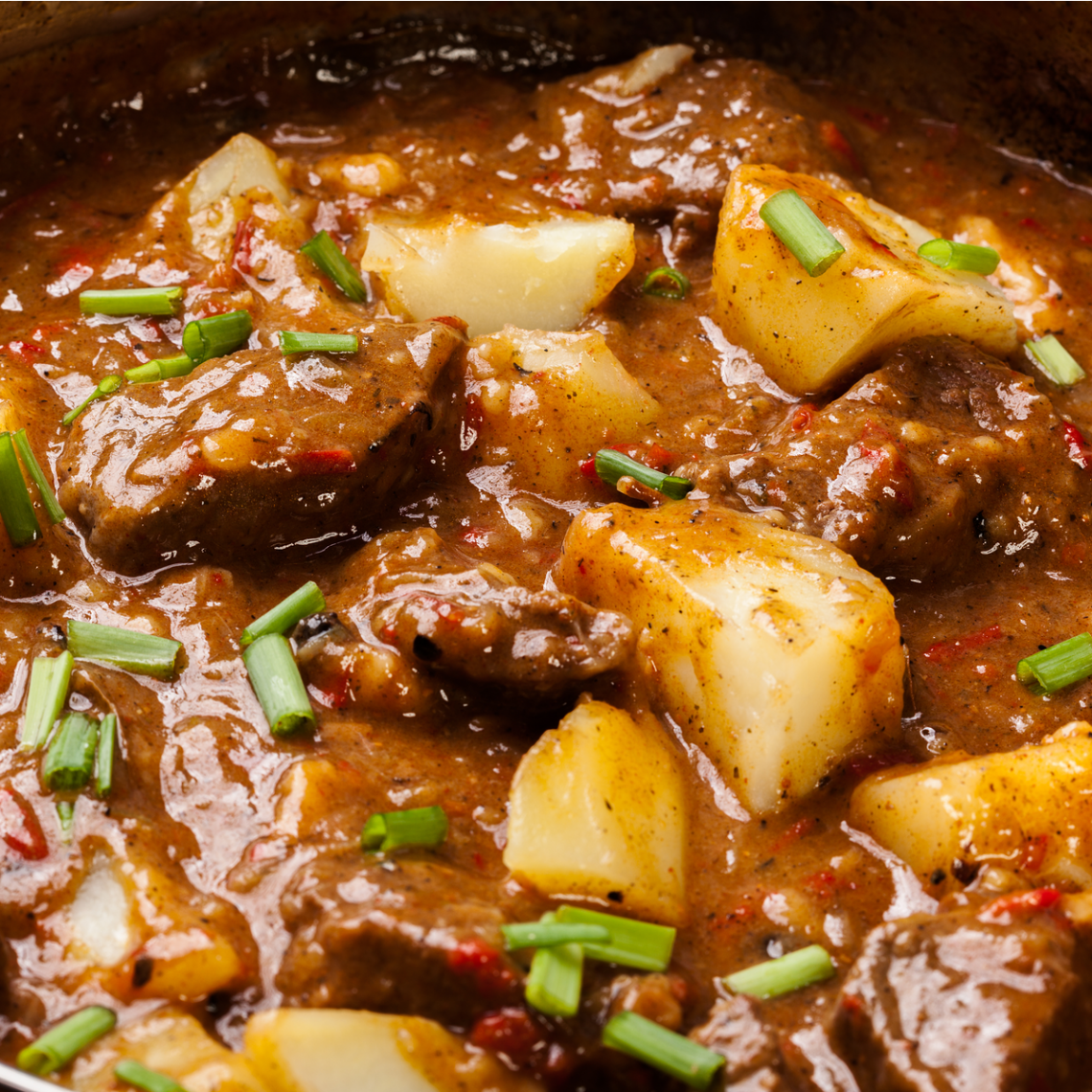
Stewing About the Cold Weather
This time of year, most of us start thinking about a stew. It’s cold and rainy outside, we can’t go anywhere, and we’re yearning for a simple, satisfying meal. A good stew has that satisfying warmth that fits the bill. That well-tempered combination of meat and vegetable flavors carried by the gravy-like liquid – not too much – carries the day. Too much liquid makes it soup, and we’re seeking something more substantial at this time of the year. And since we can’t feed a crowd these days, well, stew makes excellent leftovers, good for a few days in the fridge or frozen.
The first dish my mother taught me was a basic beef stew – beef, potatoes, carrots, peas, and a gravy-based liquid. It became my go-to, signature dish when I began cooking for others. As with any signature dish, you always have to meet or exceed the outcome of your last presentation. By the time I was in my mid-20s, I had upgraded to carbonnade a la flamande, a Flemish dish made with beer. That pleased my guests so much that some would request it. That worked well for a few years.
My own chili
When my kids were young, they favored Southwestern food, and I added chili to my repertoire – the Southwestern version of beef stew. By that time, I was comfortable in the kitchen, so I acquired a chili cookbook and began experimenting, upping the flavor quotient with elements such as chopped chipotles, smoked tomatoes and tomatillos, and other elements. Now I’ve settled in to either a ground beef and black bean chili or a good chunky beef-only chili with beans on the side, the true Texas version, with my own blend of spices for each.
My developing expertise in the kitchen also led me to sample other stews: boeuf bourguignon, Hungarian goulash, gumbos, ragouts, and a Somali version with special xawaash spices. My current go-to stew is the North African tagine, a luscious mix of beef or lamb with root vegetables and chopped apricots topped with sliced almonds and spiced with ras el hanout, served over couscous.
Stews, after all, are one of the oldest recipes among mankind. Greek historian Herodotus (about 450 BC) wrote that the Scythians (8–4 century BC) would place meat and water in an animal paunch and boil it over a bone fire. Stews were common among my Viking ancestors. A first-century AD Roman cookbook offers a lamb stew with onions and coriander and flavored with a paste of pepper, lovage, cumin, oil, wine, and garum (fermented fish sauce), the Roman condiment of choice.
A broad variety of regional specialties
In the modern world, each region favors its own special stews that have been passed down the ancestral tree. Here in eastern Massachusetts, I suppose that clam and seafood chowders are the local stew, though I’m sure many local families treasure their heirloom Irish stew, given the ethnic makeup of the area.
Local cooks in different regions have perfected their versions, using what’s available and fresh – could be lamb, pork, poultry, fish, or game – and vegetables that are the building blocks of a flavorful stew. Stews usually feature meat that is less expensive, tougher cuts that require cooking low and slow to tenderize the proteins. And what provides the regional culinary spark are the spices that round out the dish. Sometimes it’s simple, like my mother’s recipe – just a little salt and pepper and maybe some garlic. Other times, it’s complex, like the recipes from Morocco or central Africa, which typically use a blend of six to ten different local spices. What results is a belly-warming bowl of satisfaction.
What’s your stew heritage? How about sharing some recipes?
To comment, please click on “Read in Browser” or on the headline to view the blog on the website. You can log in and comment at the end of the blog to share your thoughts and start a discussion.
If you’d like to share the blog, click on the Facebook icon or one of the others. Thanks!




